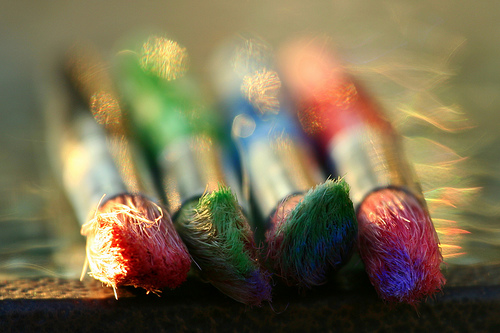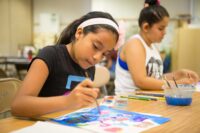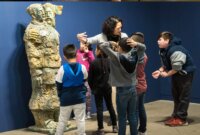
Were you one of those special children who knew exactly what you wanted to do for a living? Many of us didn’t know what we wanted to be when we grew up. For me, the problem was the question. A more engaging one is “How do you want to live your life?” I wanted to live a Creative Life, even though I didn’t have those words back then.
According to a recent Scientific American article, it’s a life “filled with new discoveries, possibilities, explorations, experimentation, self-expression, and invention – living in a full and deeply satisfying way.” Who do you know who lives their life with zest?
This valley oozes creative individuals, coming from every career path, culture, and walk of life. Our small community values creativity in citizens – it awards a Treasure Artist Of The Year (Jaime Love this year). We go even further by awarding a creative young person the Student Artist of the Year (Grace Atkinson this year.) The “Creatives” in our community have insightful stories about their path toward a creative life, which probably required courage to overcome obstacles.
When I became an art teacher, I understood my primary job was to guide my students over many hurdles to tap into their creative potential. The first step was uncovering their misconceptions:
Myth 1: Great Ideas Just Come In Eureka Moments
Many believe creativity comes in a flash of insight. However, neuro-scientific research has revealed consistent work keeps it alive. Those “Aha” moments happen while doing the work. Like exercising muscle groups through a series of reps, creativity gets stronger with regular work-outs. Making time for it, employing our passion, persistence, and discipline, bulks it up.
Myth 2: Creative People Lack Discipline
Some believe that creative people don’t follow rules, but “go wild’ until an idea comes. In fact, successful creative individuals actually prioritize their daily work around structure and regular routine, doing the work, day-in and day-out. Astounding new research from the UK shows that spending merely 20 minutes a day on a creative activity extends a human life by ten years. (Check out the book Your Brain On Art, How The Arts Transform Us.)
Myth 3: You’re Born With It – It’s In Your DNA
Scientific research into the genetic origins of creativity revealed every human is creative. NYU cognitive neuroscientist Dr. Elkhonon Goldberg explained, “We are best at learning, adapting, creating, and making culture. Creativity isn’t affected by our genes and can’t be genetically passed onto our descendants.” Summed up by Dr. Baptiste Barbot, a Yale psychologist, “Creativity is a dynamic concept consisting of human factors like risk-taking, personality, interests, and associative thinking.” It’s not inherited.
Myth 4: Creativity Can’t Be Taught
The brain isn’t wired just one way, everyone can expand their creative powers. People say “I am not creative,” but the real question is “Do you want to be more creative?” Being willing and finding what is meaningful to you, is where the magic happens. “The more we willingly engage in something that challenges us, the more our brain rewires itself, no matter what our age is. Experiencing something new, we create neural pathways with new structures bringing connections between concepts, forming new ideas. Daily practice increases our observation, intuition, and ability to build connections to rewire our brain into a more creative one,” explains UCSF Neuroscientist, Dr. Michael Merzenich.
Myth 5: Creativity Is Only For Artists
Creativity should not be confused with artistic talent. Entrepreneurs, engineers, dentists, mechanics, builders, inventors use the artistic process routinely in their careers and lives. Studies reveal that engaging the visual arts for creative expression is transformational for creative growth. One of the greatest individuals who lived a Creative Life, Thomas Edison, admitted he achieved his greatness through the sheer desire to use creativity to challenge the status quo for the betterment of humanity, inventing the phonograph, rechargeable battery, motion picture camera, and light bulb.
We can all be more creative and innovate for a more interesting, lively, and longer life – if we want it.
A community arts activist, Connie Schlelein is co-chair of Creative Bridges, an alliance of 36 Sonoma Valley nonprofits and organizations working with SVUSD to improve and expand arts education.



Be First to Comment